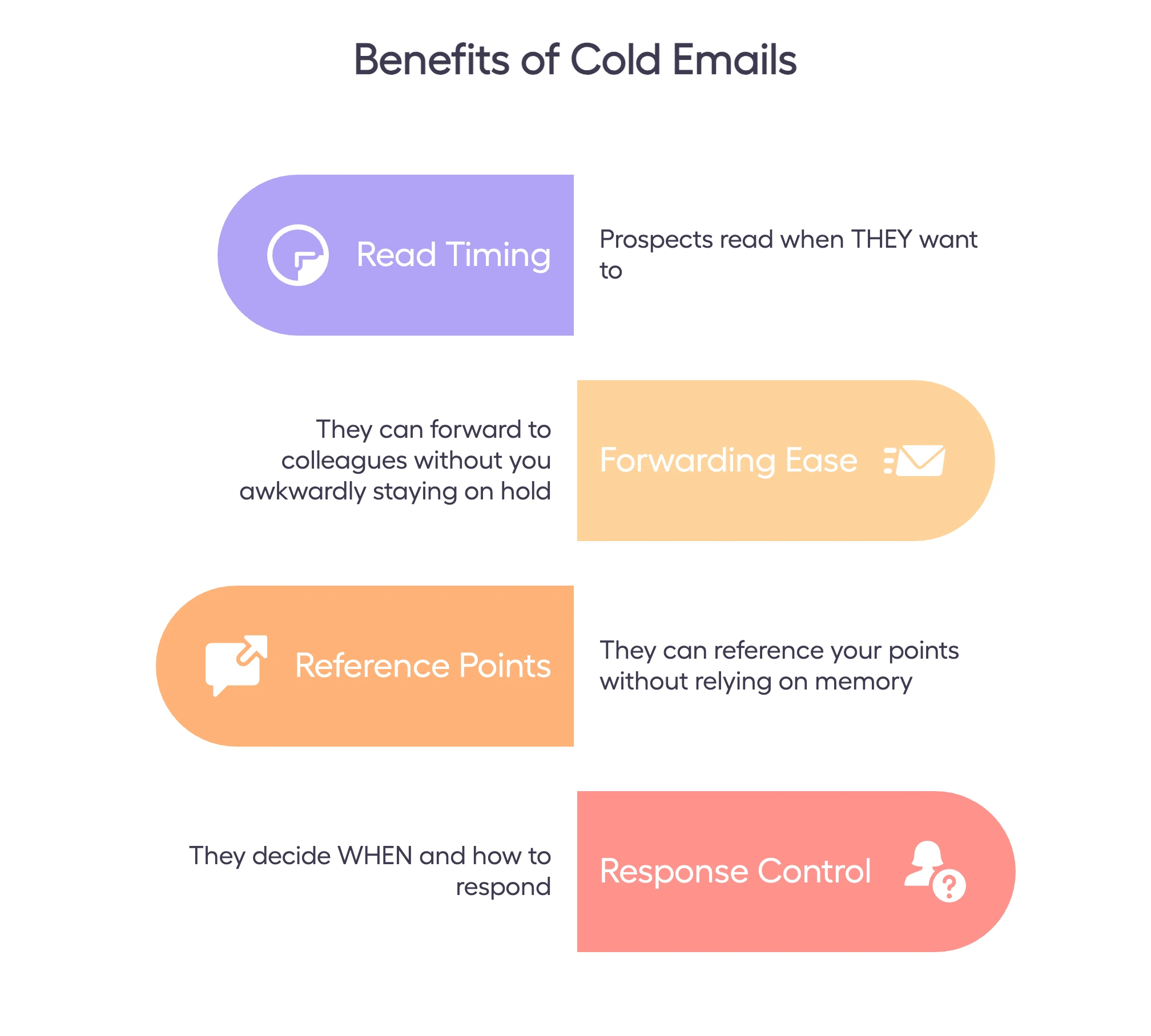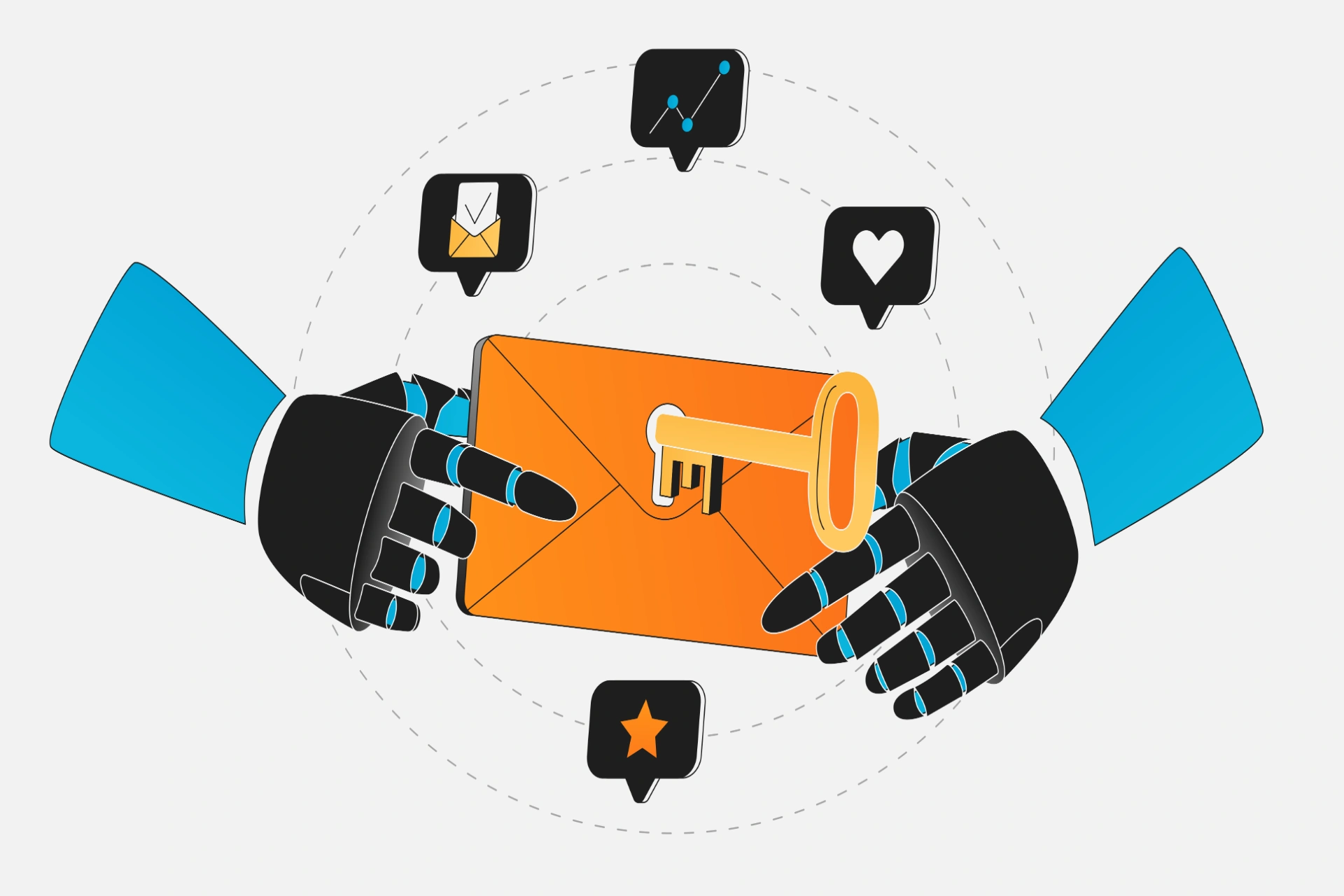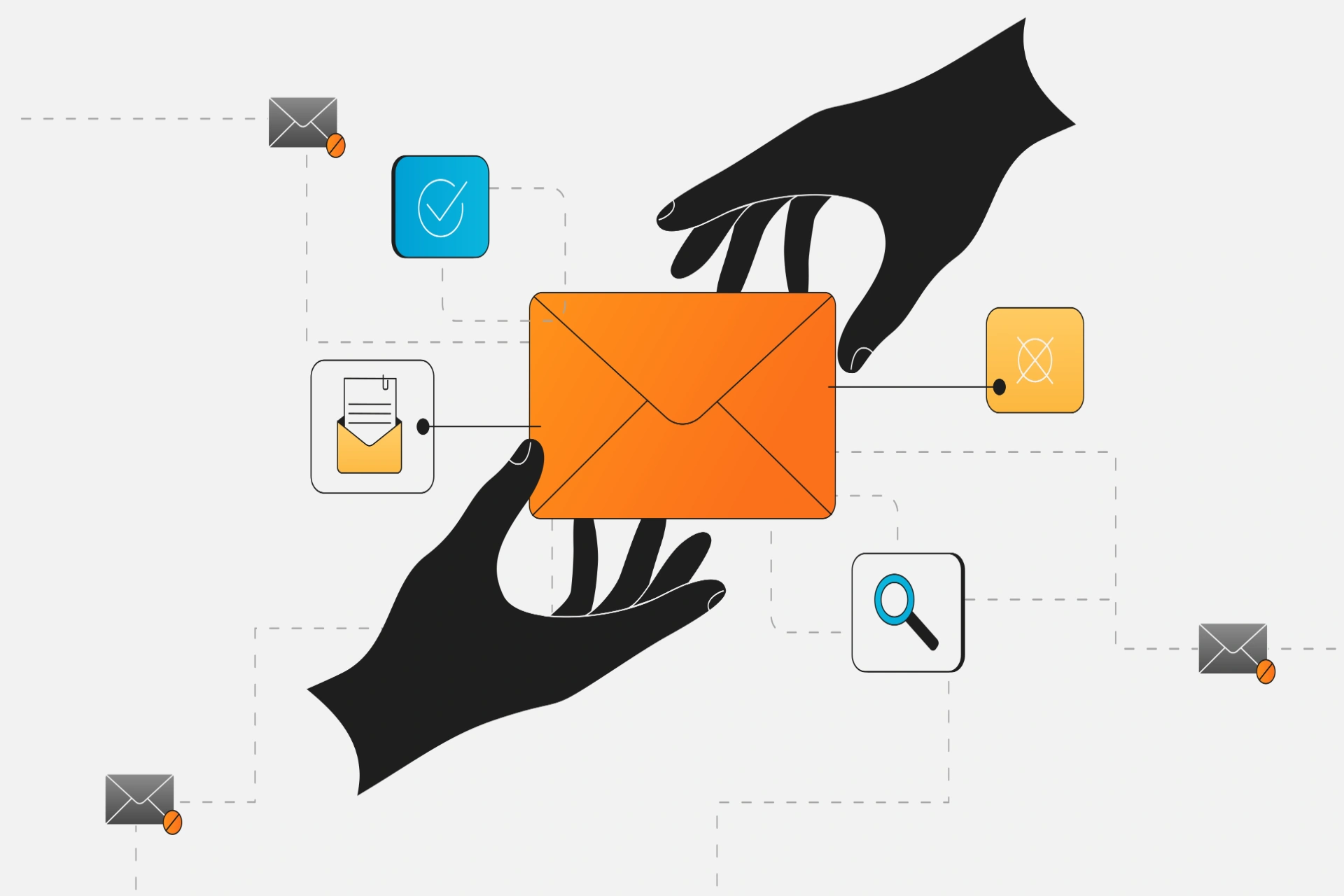
Cold Calling vs. Cold Emailing: Which One Works Best
Ever received a cold call during dinner? Or opened your inbox to find 37 "just checking in" emails? Welcome to the wild world of outreach!
Isn’t it interesting that while around 82% of B2B buyers say they’ve accepted meetings that started with a well targeted cold call, roughly 77% still prefer email as their first contact with a new vendor?
Cold calling and cold emailing remain the two dominant outreach channels in 2026, each with strengths depending on intent and timing. In 2026, cold email is usually more scalable and cost-efficient, while cold calling still wins for high-stakes, complex deals.
So which channel actually works best in 2026?
Our team runs and optimizes hundreds of cold-email campaigns across 100+ B2B clients every year, giving us a deep, data-backed view of what consistently works in real pipelines, not just theory. At Hypergen, we've mastered the art of cold email (it's our bread and butter!), but we believe in giving you the full picture.
So let's compare these two titans of outreach, share what really works in 2026, and help you decide which path will fill your calendar with meetings.
Cold Calling vs Cold Emailing: Key Differences B2B Teams Need to Know
Let's face it – you can't compare apples and oranges, but you can definitely compare two different ways of making your prospects slightly uncomfortable. Cold calling and cold emailing might share the same goal (getting that coveted "yes"), but they're completely different.
At the simplest level, cold calling is real-time verbal outreach, while cold emailing is asynchronous written outreach that prospects can respond to whenever they’re ready.
Quick snapshot:
- Cold calling: live connection, instant reactions
- Cold emailing: inbox-friendly, scalable, easier to forward
- Best fit: calls help with complex enterprise sales; emails shine for B2B SaaS and busy, mobile-first buyers
Cold calling dates back to the door-to-door salesmen era, those brave souls who'd knock on strangers' doors with a smile and a pitch.
Today's version involves phones instead of doorbells, but the principle remains: direct human connection through voice. And in 2026, you’re often reaching mobile-first decision-makers protected by AI-powered call screening, so every dial needs to be intentional.
It’s evolved from random dialing to research-backed outreach, with top performers doing their homework before picking up the phone.
Cold emailing arrived with the internet boom as a digital alternative.
Fast forward to today, cold emailing has evolved into highly targeted messaging shaped by buyer intent, timing, and AI-assisted personalization - our specialty at Hypergen, where we track over 100 prospect signals to make sure your emails hit home.
And if you’re still mixing cold outreach with marketing emails, our guide on cold email vs email marketing makes the line between them painfully clear.
First impressions: Voice vs. text
Cold calling gives you immediate emotional engagement; cold emailing gives you convenient, low-pressure touchpoints.
When your SDR dials out, you get a live voice, an instant reaction, a chance to build trust in seconds.
With email, you land in a potential buyer’s inbox and let them engage when they’re ready.
Not sure what makes an email grab attention from the very first line? Our guide on how to write the best cold email shows exactly what high-performing teams do differently.
According to recent findings, only 2–5% of cold calls convert to meetings in 2025, and it now takes an average of 8 call attempts to reach a decision-maker. Email outreach meanwhile averages reply rates of 4%–8%, with personalization and timing driving the difference.
So whether you prefer voice or text, the essence is the same: your first impression must land. The channel is different, the stakes are too.
Time investment & scaling potential
Cold calling consumes more time per contact, while cold emailing scales more efficiently.
In outreach, time equals money, and scale equals reach. Cold emailing scales far better than cold calling because once your infrastructure is set, you can reach hundreds of prospects per day, while calls stay 1:1.
- Research + dial + talk + note = ≈ 7–9 minutes per call (≈ 6–9 calls/hour) for cold-calling reps, with typical conversion ~2–3%.
- Sequence build + deliverability setup + send = ≈ 80–120 personalised emails/hour, with reply rates often hit the 5-10% range for good campaigns.
Because cold email moves at roughly a 1:100 + ratio vs. cold calling’s 1:1, you can scale more reps, schedule more follow-ups, and book more meetings per week (especially when your lead list for cold emailing is clean, segmented, and actually matches your ICP!).
If you’re wondering which tools actually help you send more emails without tanking deliverability, our guide on the best cold email software breaks down the ones worth using.
How personal can you really get?
Cold calls win in adaptive personalization; cold emails win in data-driven personalization at scale.
Cold calls shine with on-the-fly personalization allowing you to:
- Adjust your pitch mid-sentence based on a subtle "hmm" from your prospect.
- Pivot instantly when you sense hesitation.
- Build on excitement when you strike gold.
On the other side, email personalization has come a LONG way from "Dear {FIRST_NAME}." Today, personalization is driven by concrete signals: tech-stack changes, hiring trends, funding rounds, competitor tools, or even page visits.
Email personalization methods in 2026 include:
- Behavioural trigger lines (e.g., “Noticed you upgraded your tech stack to X”)
- Firmographic insights (company size, funding event, competitor tool)
- Historical engagement signals (page visits, content downloads)
- AI-generated inline personalization (custom pain-point sentence tailored to role)
When to use which?
Cold calls win on real-time nuance; cold emails win when you need targeted, data-backed relevance across hundreds of prospects.
The Psychology Behind Cold Calling vs. Cold Emailing
Understanding how your outreach affects your prospect's brain can make all the difference between "tell me more" and "Please remove my number." The psychology behind cold outreach is fascinating (and explains why some methods work better than others).
In simple terms: cold calls interrupt; cold emails invite.
Interruption vs. invitation
Cold calling creates what psychologists call a "pattern interrupt" – it breaks your prospect's flow and demands immediate attention.
That's both its strength and weakness. It forces engagement but may catch people at the worst possible time, especially in today’s world of mobile-first workdays and AI-powered call screening tools.
.webp)
On the flip side, cold emails are more like leaving a note that says, "When you have a minute, I have something cool to show you." It's the difference between someone demanding your attention NOW versus letting you engage when you're ready.
And as research shows, about 80% of buyers prefer this non-intrusive approach for first contacts.
Why do prospects feel more in control with cold email?
Nothing makes humans more defensive than feeling their control being taken away. Autonomy in sales outreach simply means prospects feel they can choose if, when, and how to respond.
Cold calling immediately puts the prospect in a lose-lose situation: be rude and hang up, or surrender their precious time.
Cold emails flip this dynamic completely.

This control factor goes a long way in explaining why so many buyers prefer email for first contact. People simply like being in the driver's seat of their workday, especially in an async-first buying culture where most research happens without talking to a rep at all.
We've built our entire approach around the idea that cold emails should never feel cold.
That’s why our clients consistently see much higher open rates than industry averages, because we've mastered the art of cold email marketing strategies that create genuine connections.
Cold Calling vs Cold Emailing: Advantages, Disadvantages, and Trade-Offs
Let's cut to the chase - neither approach is universally "better." They're just different tools for different jobs.
Here's our no-nonsense breakdown of when each method shines:
Looking at these numbers, you might wonder why anyone still picks up the phone. But each method shines in specific situations.
When should you use cold calling instead of cold email?
Use cold calling when deals are complex, high-value, or time-sensitive.
Some scenarios just call for a human voice. Consider reaching for the phone when:
- The stakes are high: For deals worth six figures or more, investing in direct conversation makes sense. That's why 82% of decision-makers have taken meetings after well-executed cold calls.
- Your product is complicated: If your product needs explaining or customizing, calls let you adapt your pitch based on real-time feedback.
- Emotion matters: When decisions carry significant personal or professional consequences, the empathy conveyed through voice creates psychological comfort that text can't match.
- Time is critical: When market conditions create urgent needs, waiting for email replies could mean missing the window of opportunity.
Simple micro-framework: If ACV is high, risk is high, and timing is tight, default to a call first, then follow up with email.
When is cold email better than cold calling?
Use cold email for scalable outreach, busy buyers, or multi-stakeholder deals.
At Hypergen, cold emailing is our specialty for a good reason. Email outreach shines brightest when:
- You are in the early stages: Email excels for initial contact with cold prospects, with almost 80% of buyers preferring this approach for first touches.
- You're targeting busy professionals: For prospects constantly in meetings or on the move, email waits patiently in their inbox.
- You need scale: Trying to reach hundreds of prospects quickly? Email is your MVP, and sending to multiple qualified contacts in the same account can boost reply rates by around 93% compared to just one contact.
- You're dealing with complex buying committees - Emails can be easily forwarded to multiple stakeholders and saved in shared inboxes or Slack threads, making it easier for everyone to stay on the same page.
- You have visual value to demonstrate: Screenshots, GIFs, graphics, or links to videos can showcase your product in ways a phone call never could.
- You're crossing time zones: Email doesn't care about working hours - it's there whenever your international prospects check their inbox.
- You're building a systematic approach: Email sequences can be tested, optimized, and scaled with precision that's impossible with calls.
We've seen this work wonders in tech companies and SaaS businesses where buyers are naturally digital-savvy. Professional services firms like consultancies, agencies, and financial services also report stronger outcomes from highly targeted email outreach.
The Numbers Game: Comparing Cold Call vs. Cold Email Success
Let's talk hard numbers. If you're like us, you want cold, hard facts before making any decisions.
So the stats don't lie:
- Cold calling achieves 13-14% response rates when done well
- Cold emails average 8-9% response rates across industries
But these numbers tell only part of the story. What counts as a "response"?
For cold calls, the important number isn't just who picks up, it's who engages in meaningful conversation. According to Cognism's report, while the connection rate might be 16.6%, the average cold call only lasts 83 seconds.
That's barely enough time to get past "How are you doing today?"
For emails, the open rate (15-25%) looks encouraging, but what really matters is reply rate. The good news? When someone does reply to your email, it usually indicates genuine interest rather than just politeness.
From first touch to meeting
The path from initial contact to sitting down for a real sales conversation looks quite different between these methods.
- Cold calling's path:
%20(1).webp)
Cold calling creates immediate opportunities for conversion. Live conversations let you handle objections in real-time and qualify leads on the spot – explaining why 82% of buyers who answer cold calls agree to meetings.
- Cold emailing's path:
%20(1).webp)
The email journey typically requires more touchpoints. Data shows that sending a first and second follow-up email increases your chances of getting a reply by 21% and 25% respectively.
And don't give up early, 55% of all replies come from follow-up emails, not the initial outreach.
The ROI breakdown
Now let's talk money, because at the end of the day, that's what matters most.
For cold calling, your budget needs to cover:
- Sales rep time (the biggest factor)
- Phone system and tech
- Training (good cold callers aren't born, they're made)
- CRM integration for call tracking
For cold emailing, the investment looks different:
- Email platform and automation tools
- Deliverability tools
- Content creation
- List management
- Minimal incremental costs per additional contact
But raw cost isn't everything. The ROI equation depends on your average deal size.
It's Not Really About "Versus”
So after all this deep diving into cold calling vs cold emailing, what's the verdict? Which one wins the ultimate showdown?
It depends! (We know, we know, most unsatisfying answer ever.)
Truth is, both methods have their place in a smart outreach strategy. Cold calling creates an immediate human connection but scales poorly. Cold emailing reaches more prospects efficiently but can feel impersonal without the right approach.
We've found our sweet spot specializing in intent-based cold email marketing. By tracking digital buying signals and crafting personalized sequences, we help businesses connect with prospects at the perfect moment – when they're actively looking for solutions.
So whether you're Team Phone or Team Email, remember that ultimately, it's about connecting with the right people, with the right message, at the right time, through the right channel.
Master that formula, and you'll never have to worry about cold outreach success again.
Frequently asked questions
In 2026, cold emailing is more effective for first contact, while cold calling is more effective for late-stage, high-value conversations. Email wins early because buyers prefer async communication, can forward messages to colleagues, and can reply when they’re actually ready. Calls win later when a prospect already knows who you are and is open to a real-time conversation.
In 2026, cold emailing is more effective for first contact, while cold calling is more effective for late-stage, high-value conversations. Email wins early because buyers prefer async communication, can forward messages to colleagues, and can reply when they’re actually ready. Calls win later when a prospect already knows who you are and is open to a real-time conversation.
Cold calling conversion rates typically range from 2–3% for average teams and 5–6% for top performers using intent data and strong targeting. Cold email reply rates vary widely, but high-performing B2B lead gen with proper personalization, deliverability, and multi-contact targeting often see 5–8% reply rates.
It ultimately depends on your goal. Cold email works best for first-touch outreach, especially as B2B buyers increasingly prefer asynchronous communication, making it more effective for driving engagement, replies, and predictable pipeline flow. Cold calling, on the other hand, excels when urgency or rapid qualification is required. The strongest approach for most teams is a hybrid sequence: lead with cold email to establish context and interest, then use calls once a prospect engages to accelerate the conversation, uncover objections, and secure a meeting.
Yes. Cold email works well for first contact and scalable outreach, while cold calling is effective once interest or urgency is established. Many teams start with email, then use calls to handle objections and move high-value deals forward faster.
Don’t miss these
Get Your First Lead This Month
14 days to get started. 7 days to get your first lead on average.







.webp)



